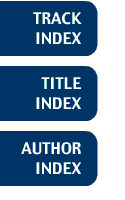
Track: Ecology, Conservation, and Archaeology
A New High-Resolution National Map of Potential Vegetation Patterns Produced Empirically Using Multivariate Spatial Clustering

William W. HargroveRobert J. Luxmoore
A parallel supercomputer was used to divide the conterminous forty-eight United States into 3,000, 5,000, and 7,000 ecoregions with relatively homogeneous values of elevation and edaphic variables using an iterative multivariate clustering technique. Resolution of the clustered maps is 1 square kilometer; each national map has over 7.7 million cells. The five variables include elevation, soil nitrogen, soil organic matter, soil water, and depth to water table. Assignment of a color table to the resultant maps that use the principal component scores from each cluster for red, green, and blue color contributions results in a map where the ecological similarity of adjacent cluster regions is readily apparent. This slowly changing color spectrum maps the ecological relationships of elevation and physiognomy across the nation at very high resolution. The resultant national map objectively captures the ecological patterns of spatial variance in physical, edaphic, and climatic factors relevant for the distribution and abundance of plants and animals, and it identifies regions having similar patterns of potential vegetation growth.
William W. Hargrove
Oak Ridge National Laboratory
P.O. Box 2008
Oak Ridge, TN 37831-6274
USA
Telephone: 423-241-2748
Fax: 423-241-3870
E-mail: hnw@ornl.gov